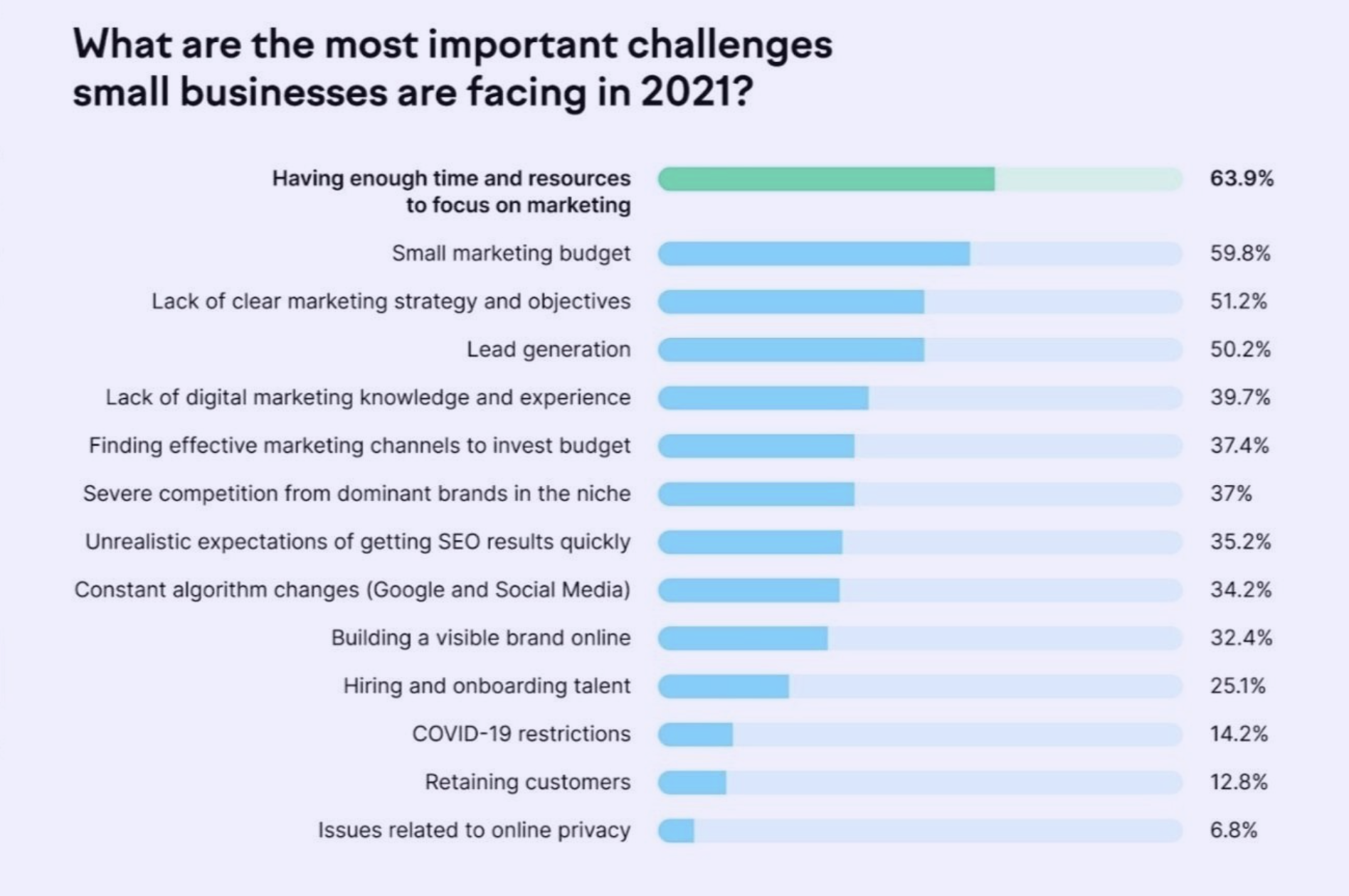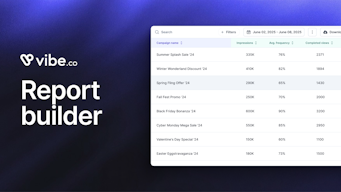How CTV Can Supercharge SME Marketing
Heaven knows it’s been a pretty heinous couple of years for small and medium sized businesses who didn’t have the financial cushion to weather the staff shortages, supply chain disruptions, and radical consumer behavior shifts that have transformed our world since March 2020. Whether you’re an agency working with SMEs (Small and Medium Enterprises), a business owner who weathered the storm, or part of a new enterprise that grew out of the ashes of a COVID garbage fire, we are here to help you grow.
SME challenges today
As a surprise to no one, digital marketing budgets have been steadily increasing over the last few years to match consumer demand for remote access to goods and services, and yours probably has too. But while you’re probably way better versed in Google Ads and Meta business suite now than you were at the beginning of 2020, you might not be as confident about CTV, or what it even means… Did we hit a nerve? Don’t fret. Connected TV advertising is still very new to the digital advertising landscape, but it’s so perfectly suited to SME business challenges, you really can’t afford to ignore it any longer, so let’s jump right in.
Earlier this year, Semrush released a survey analyzing the most common challenges SMEs are facing right now. What came out was an all-too-familiar story:
- Over half of respondents have only one or two team members in charge of marketing, who often manager other operational tasks as well
- Self-identified marketing proficiency came out at 6.8, but probably lower if focused on digital proficiency only
- The top 5 challenges by far are lack of time to focus on marketing (63.9%), tight marketing budget (59.8%), lack of clear marketing strategy (51.2%), lead generation (50.2%), and lack of digital marketing knowledge (39.7%).

How CTV ads work
Performance-focused CTV advertising, especially when hosted on a self-serve CTV ad platform addresses every one of these issues. Yes, really! Let’s take a closer look.
There’s nothing quite as disconcerting as having to take client meetings, manage a team, handle payroll, then needing to pour over conversion rate and attribution reports you hope you’re reading correctly. Add to that the infernal regulatory quicksand adtech has been battling since 3rd party cookies and Apple fingerprinting started going down the drain, and you’re left with a mess. This frustration is part of the reason so many SMEs aren’t leveraging the power of digital advertising to the extent that they can and should.
As daunting as it may seem, today’s self-serve CTV ad platforms allow marketers - de facto or not - to :
- Easily and clearly define targets, without have to build your own 1st party audience databases
- Use optimized Real Time Bidding (RTB), so you can get the best ad placement results without going over budget
- Edit campaign targets, creative, channel types, or budget thanks to real-time reporting. There is no reason for you to commit time and money to a type of campaign you don’t yet understand. Try things out and adapt as you go!
To give you a better sense of what to expect, let’s compare the Vibe self-serve CTV platform to tools you are familiar with like social media, Google Ads, and linear TV.
How does CTV compare to the digital channels you already use?
You probably heard about 3rd party cookie depreciation and the app tracking privacy policy on Apple devices, but other than a vague concern that audience targeting won’t be as effective, what does that even mean? A few things.
Digital
For a long time, ad tech giants like Facebook and Google seemed invincible because of the incredibly specific data they could gather from their users whose attention they could then sell to advertisers for virtually any price they chose. This kind of 1st party data “black box” is what’s known as a Walled Garden, and the recent changes in privacy regulations have put a serious hurt on its prestige. Now that alternate data sources have started to emerge as a solution to privacy regulations, savvy marketers are increasingly asking for transparency in attribution, which is one of the many benefits of working with CTV platforms.
Until now, you basically had to take Google or Facebook’s word for it when they said a certain amount of people had seen or clicked on your ad, but now, every impression, click, or conversion is listed for you to see. You may actually be able to gather insights about your target market instead of crossing your fingers and hoping someone in an arbitrary bracket responds to your ad. That also means CPMs (Cost Per Mille) are increasingly low for CTV versus social media, and it’s certainly cheaper than Google display ads - but you probably already knew that…
Linear TV
Another medium you are definitely familiar with, although you may not have advertised on it yet is linear television - basically old school television that plays programs at a certain time, delivered via cable, as opposed to CTV and OTT which deal with streamed content, available on-demand.
So how does CTV compare to linear? Well, I’ll be blunt. It’s better. CTV advertising has the same high completion rates that linear TV has, except you can actually target, measure, and adjust your campaigns with just the click of a button. Let’s review: CTV advertising allows you to:
- Access high quality inventory (channels and apps) without paying an arm and a leg
- Launch your ad immediately - no need for upfronts or slot commitments
- Adjust your campaign according to real-time reporting data
- Target an audience by zip code, county, age, gender, channel, or interest
- Launch a campaign yourself, in a few minutes or less
Sound too good to be true? It’s not. It took the hard work of thousands of developers and adtech veterans dead set on creating a more transparent and equitable digital advertising ecosystem, and guess what? We did it.


